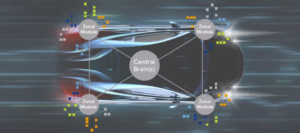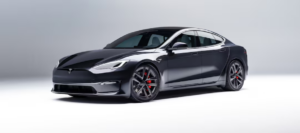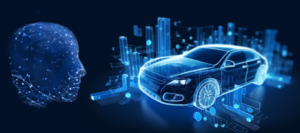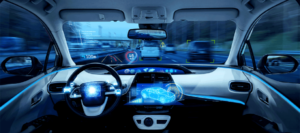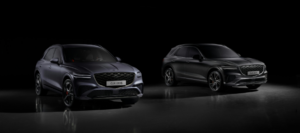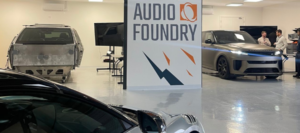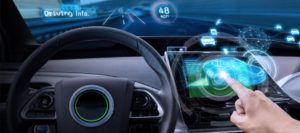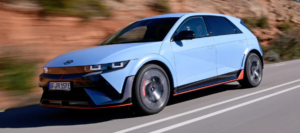Mobility
The automotive industry’s shift towards vertical integration is significantly transforming the future of cockpit design, with more OEMs aiming to exert greater control over their in-car audio and user interface systems. BYD exemplifies this trend by integrating processes from battery production to complete vehicle manufacturing. Traditional automotive giants are also increasingly embracing vertical integration, motivated […]
Read MoreZonal architecture in automotive design is transforming the way vehicle electronics and computational systems are organized. Instead of the traditional approach, where each vehicle function—such as braking, infotainment, or climate control—has its own dedicated electronic control unit (ECU), zonal architecture consolidates multiple ECUs into fewer, more powerful units. Each zone within the vehicle manages a […]
Read MoreVehicle electrification is progressing at a rapid pace worldwide, driven by stringent emissions targets set by governments aiming to curb climate change. As these targets accelerate the shift from internal combustion engines (ICE) to hybrid electric vehicles (HEVs) and battery electric vehicles (BEVs), significant changes are underway in automotive design and technology. SAR Insight eMobility […]
Read MoreA Software-Defined Vehicle (SDV) signifies a transformative leap in automotive technology, where software increasingly governs the vehicle’s functions, from infotainment systems to driving dynamics, rather than relying solely on traditional hardware components. This shift underscores a major evolution in vehicle design and functionality, allowing for a more flexible and upgradeable approach to automotive engineering. One […]
Read MoreWhile fully autonomous vehicles may still be 5 to 10 years away from widespread adoption due to ongoing development and regulatory challenges, the adoption of partial automation is accelerating. Features such as adaptive cruise control are becoming standard in many mid-to-high-end vehicles, reflecting a significant shift in consumer expectations and automotive technology. Advanced driver assistance […]
Read More“Lies, damned lies, and statistics” ….. There has been a lot of reporting recently of a slow down in the market for EVs, but I think this is being mis-reported by many. You can use data to make whatever argument you like of course, that is the beauty of it. Despite a global cost of […]
Read MoreAudio continues to be a crucial part of the automotive offering to consumers, enabling OEMs to differentiate from the competition and deliver compelling solutions. As the automotive market continues to develop, with 4 key drivers being automation, electrification, software defined vehicles, and zonal architecture, how audio is delivered is increasingly important. Some OEMs continue to […]
Read MoreThe Future Cockpit is not all about pillar-to-pillar screens and fancy HMI solutions. It is also important to consider reducing costs and upgrading lower-cost vehicles, the highest volume market segment. This announcement of a partnership between MediaTek and Infineon Technologies demonstrates the need for more cost effective solutions and the need for a more collaborative […]
Read MoreCitroen announced that it will launching ChatGPT Navigation Assistance, using SoundHound’s voice and audio recognition system that integrates OpenAI’s ChatGPT. It is making the feature available on the upgradable Connect PLUS Pack on “the C4, C4 X, C5 X, Berlingo and SpaceTourer for passenger cars, and Berlingo Van and Jumpy for commercial vehicles” in several […]
Read MoreActive Sound Design (ASD) is a technology used in modern vehicles, particularly electric vehicles (EVs) and some internal combustion engine (ICE) vehicles, to enhance or create sound experiences within the cabin. For EVs, which naturally lack the engine noises associated with ICE vehicles, ASD can generate artificial motor or driving sounds to enrich the driving […]
Read More

